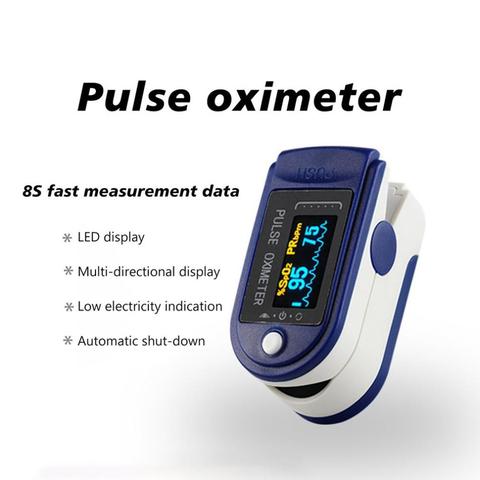We offer a huge selection of spO2 sensor and cable options at low prices. Whether you are looking for a direct-connect s pO2 s ensor, short spO2 sensor, disposable spO2 sensor, or spO2 adapter cables, we have a complete selection and offer e xcellent customer service plus same-day shipping. The automatic usage has huge advantage in the household, as the oximeter would give an alarm for lower SpO2 value. It will automatically increase/decrease the O2 flow based on SpO2 setting which can be auto adjusted at 2,5,7,10 lpm flow rate. The optimal O2 flow rate conserves the O2 resources/O2 management and greatly increases the endurance. Low blood oxygen, known as hypoxemia, means that the level of oxygen in the blood has dropped below average, normal levels, due to one or more of many different causes. Under most circumstances, breathing room air, normal readings range from 95 to 100 percent. Lic jeevan saral statement download. Levels above 90 percent are not considered low, so you probably are worrying.
Download downgrade to ie7 vista free. The fact that the SpO2 levels did not significantly decrease during minimal physical activity while wearing masks, makes me wonder what happens to the CO2 levels in an ABG under the same conditions. In addition, I would like to see the results of both SpO2 and CO2 levels with increased physical activity while wearing a mask. An SaO2(arterial oxygen saturation) value below 90% causes hypoxia(which can also be caused by anemia). Hypoxia due to low SaO2is indicated by cyanosis, but oxygen saturation does not directly reflect tissue oxygenation. The affinity of hemoglobin to oxygen may impair.
Blood oxygen levels during sleep should be at a 95 percent saturation, which is considered normal, according to the American Sleep Apnea Association (AASM).
It is normal for blood oxygen levels to decrease during sleep. All body systems have altered basal function during your sleep, including breathing. You don’t breathe as deeply when you are sleeping, and not all your lung spaces function at full capacity. Because of this effect of sleep on breathing, it is normal for your sleep oxygen level to decrease below awake levels. Tests that show a waking oxygen level at or above 94 percent typically indicate a sleep oxygen level of at or above 88 percent.
However, when it persistently drops below maintenance levels, health problems can develop. In addition, certain medical conditions can lead to low oxygen while you are asleep.
Medical Disorders
According to the Mayo Clinic, certain medical problems, especially of the cardiovascular and respiratory systems, can lead to blood oxygen below normal levels. The effects of these conditions can worsen while you are sleeping. The most common disorders include:
Diseases of the lungs:
Several lung diseases can narrow or block lung air spaces, inflame or scar lung tissue, and can also interfere with normal breathing patterns. These lung diseases include:
- Chronic obstructive pulmonary disease (COPD), such as emphysema and chronic bronchitis
- Asthma
- Cystic fibrosis, a genetic disease that causes a build of mucus in the lungs
- Pneumonia and other lung infections
- Smoking and lung cancer
Heart diseases:
Disorders of the heart, which can interfere with blood flow, blood oxygen level, and oxygen supply to tissues include:
Low Spo2
- Coronary heart disease, a build-up of plaques in the arteries of the heart
- Congestive heart failure with leakage of fluid into lung tissue
- Congenital heart disease, a developmental defect in the structure of the heart
Anemia:
The decrease in hemoglobin (Hgb) with anemia lowers the ability of your red blood cells to absorb oxygen from your lungs and carry it to your tissues. Abnormal Hgb, such as with sickle cell anemia, causes the same problem.

Obesity:
This a cause of sleep apnea where the throat becomes obstructed during sleep and interferes with breathing. Obesity also causes obesity hypoventilation syndrome (OHS), with diminished deep breathing and oxygen intake.
Drugs:
Chronic use of prescription or illegal opioids, sedatives, and recreational or other illegal drugs can depress the brain’s breathing center and therefore slow down your breathing and oxygen intake.
Alcohol:
Abuse of alcohol, especially at bedtime and mixed with drugs, can interfere with normal breathing and sufficient oxygen intake.
Health Consequences
A normal blood oxygen level is vital for normal tissue and cellular function. Therefore, low blood oxygen affects the function of every tissue in the body. A chronic problem of low oxygen levels while sleeping can increase the risk for several health consequences including:
- Sleep disorders, such as bouts of insomnia
- Poor sleep quality, such as restless sleep with several awakenings
- High blood pressure
- Cardiovascular disease including heart failure
- Cardiac arrhythmia and a risk for sudden death
- Type 2 diabetes
- Depressed brain function and possible brain damage
- Risk for loss of consciousness, coma, and death
Low Spo2 Symptoms
If you think your oxygen level falls below normal while you are sleeping, consult with your doctor. He might suggest a sleep study as part of your evaluation. During an overnight stay in a sleep center, a technician monitors your breathing and other signs, as well as your blood O2 sat with a pulse oximeter during sleep.

